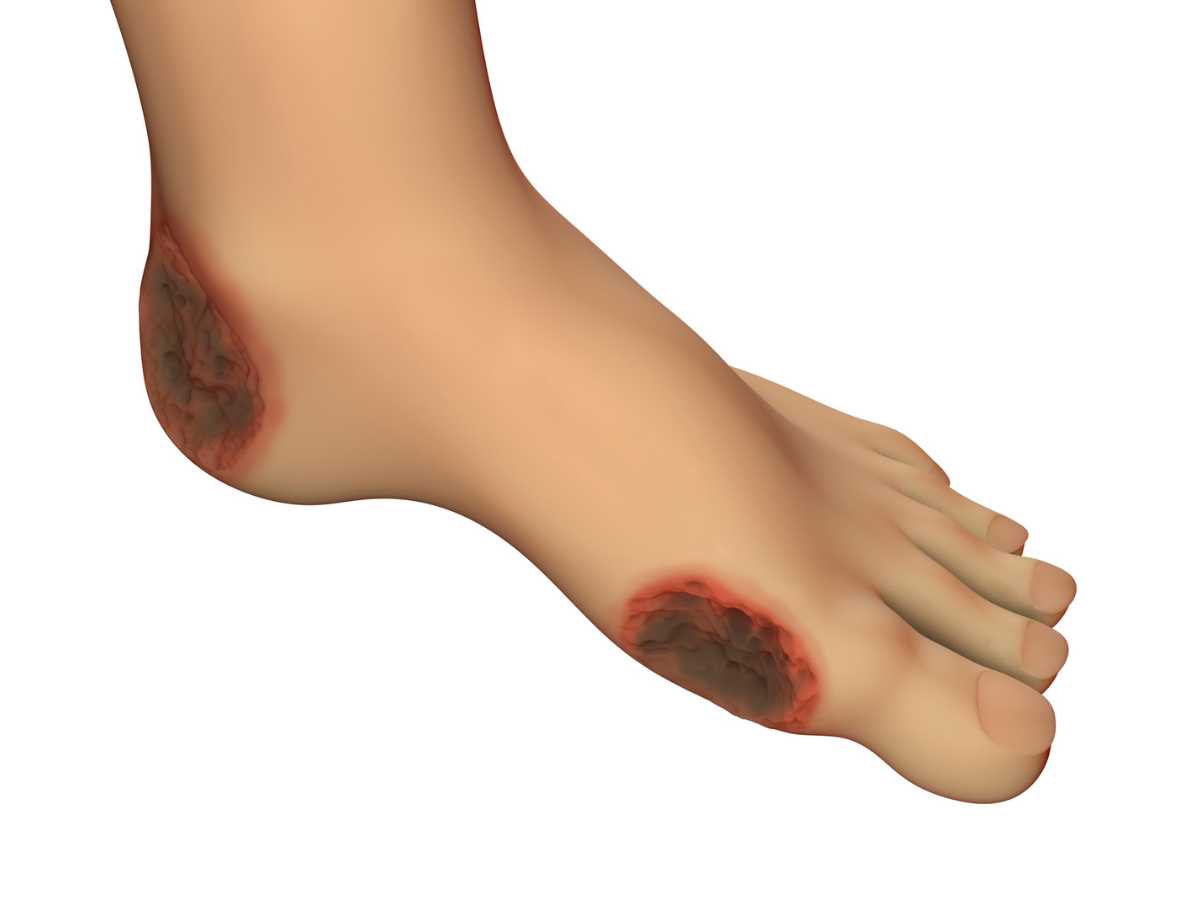Diabetic Ulcers: Risk Factors

Millions of Americans live with diabetes, a chronic condition that can cause serious health problems if not properly managed. One complication associated with diabetes is the development of diabetic ulcers.
These wounds can be challenging to treat and can often lead to infection and even amputation. Understanding the risk factors for diabetic ulcers is vital for people living with diabetes and their caregivers.
Age
As we get old, our bodies change in many ways. We may not be as active as we once were, and our skin becomes thinner and less elastic. These changes can make us more susceptible to injuries, leading to diabetic ulcers. Diabetes can cause nerve damage, making it difficult to feel pain or pressure. In addition, the reduced circulation joint in diabetes can slow the healing process. As a result, even a minor injury can quickly become a severe problem.
Age-related changes in the skin can also make ulcers more likely to develop. The skin around an ulcer may be thin and unable to hold in moisture, making it more difficult for the wound to heal. In addition, the poor circulation often seen in older adults can make it difficult for blood and oxygen to reach the wound site. These factors can all contribute to developing diabetic ulcers in older adults.
Diabetes duration
Diabetic ulcers are a severe complication of diabetes and can occur at any stage of the disease. However, people with diabetes who have had the disease for a long time are at a higher risk of developing ulcers. This is because diabetes can cause damage to the nerves and blood vessels, leading to poor circulation. Poor circulation can make it difficult for wounds to heal and increase the risk of infection.
In addition, people with diabetes often have other health problems that can contribute to ulcer development, such as kidney disease or heart disease. As a result, people with diabetes who have had the disease for many years are more likely to develop ulcers than those who have recently been diagnosed.
Smoking, obesity, and hypertension
While some factors can cause diabetic ulcers, smoking, Obesity, and hypertension are among the most common risk factors. Smoking constricts blood vessels and reduces blood flow to the feet and legs, making it more difficult for wounds to heal. Obesity increases the risk of developing foot deformities, making it difficult for wounds to heal. Hypertension strains blood vessels and can damage nerve endings, making it difficult for people with diabetes to detect injuries.
As a result, all three factors can contribute to developing diabetic ulcers. By quitting smoking, maintaining a healthy weight, and controlling hypertension, people with diabetes can help reduce their risk of developing this severe complication.
Poor Ankle-Brachial Index (ABI) and high Neutrophil/Lymphocyte Ratio (NLR)
Poor ankle-brachial index (ABI) and high neutrophil/lymphocyte ratio (NLR) are two factors that contribute to the development of these ulcers. ABI is an indicator of peripheral artery disease (PAD), and NLR is a marker of inflammation. Both of these conditions are more common in diabetes, leading to reduced blood flow and increased inflammation in the skin. This can damage the skin, making it more susceptible to ulcers. In addition, poor blood sugar control can also contribute to the development of diabetic ulcers. High blood sugar levels can cause damage to the nerves and blood vessels, further reducing blood flow and increasing inflammation.
Treatment for diabetic ulcers typically includes aggressive glycemic control and wound care to promote healing. In some cases, surgery may also be necessary to remove dead tissue or repair damaged blood vessels. By understanding the role that ABI and NLR play in developing diabetic ulcers, we can better design treatments that improve patient outcomes.
Thank you for reading
References
- Syauta, D., Mulawardi, Prihantono, Hendarto, J., Mariana, N., Sulmiati, Kusumanegara, J., & Faruk, M. (2021). Risk factors affecting the degree of diabetic foot ulcers according to Wagner classification in diabetic foot patients. Medicina Clínica Práctica, 4, 100231. https://doi.org/10.1016/j.mcpsp.2021.100231